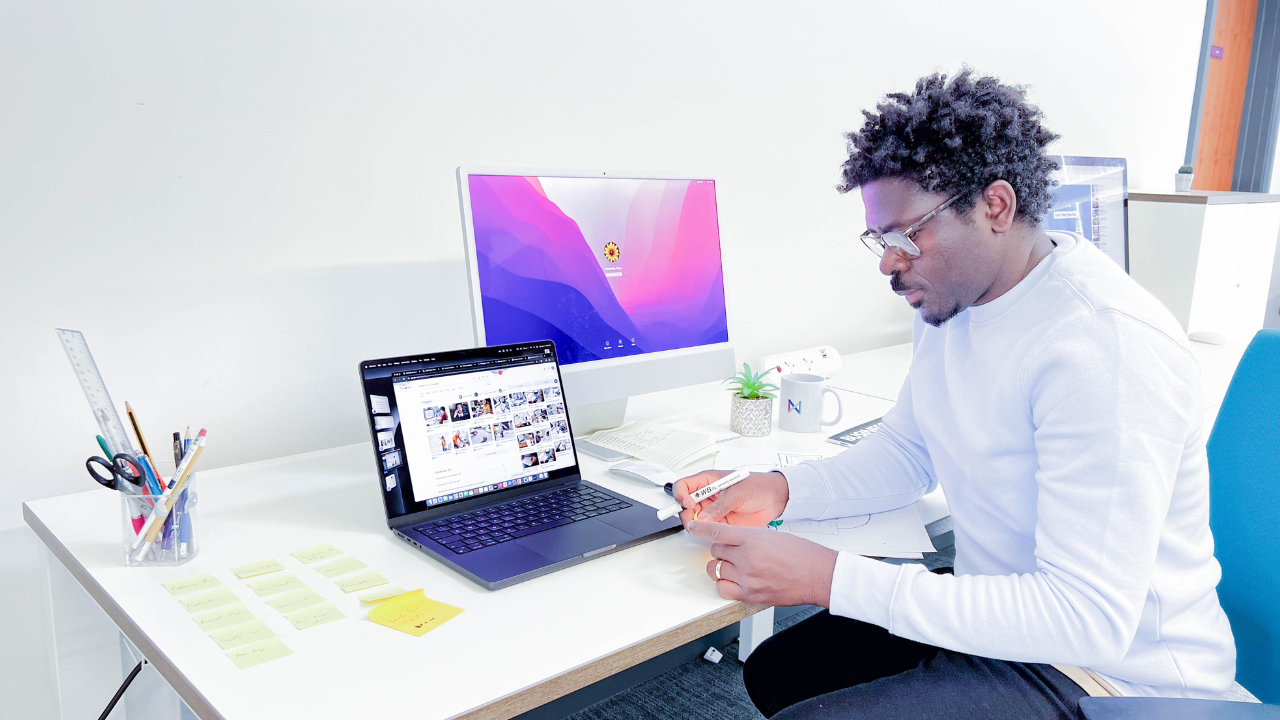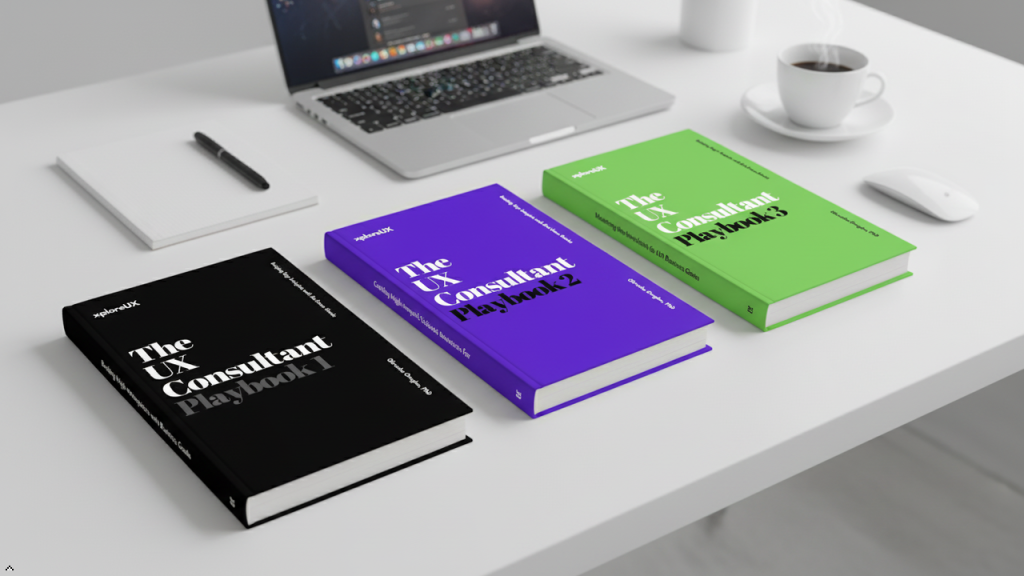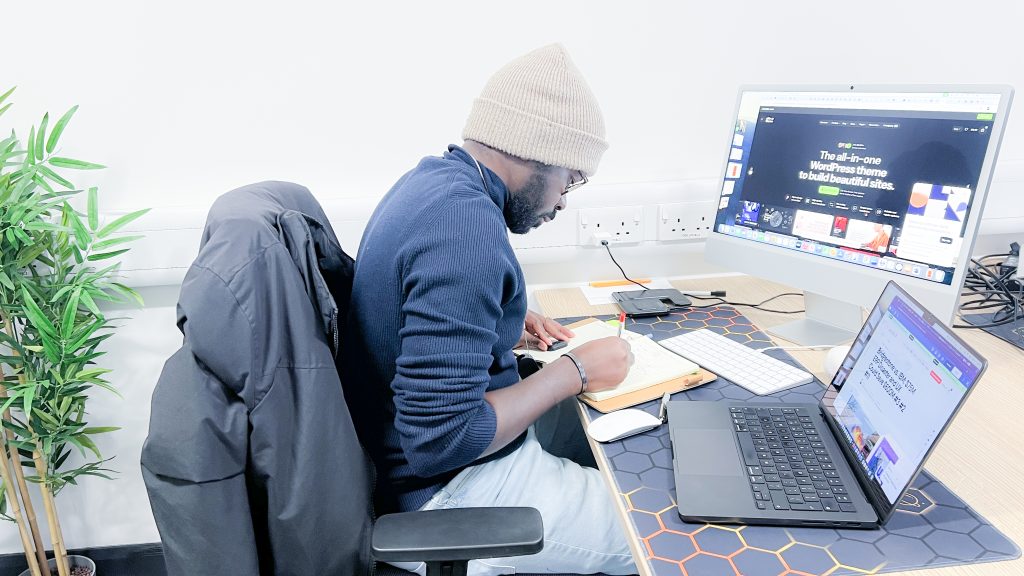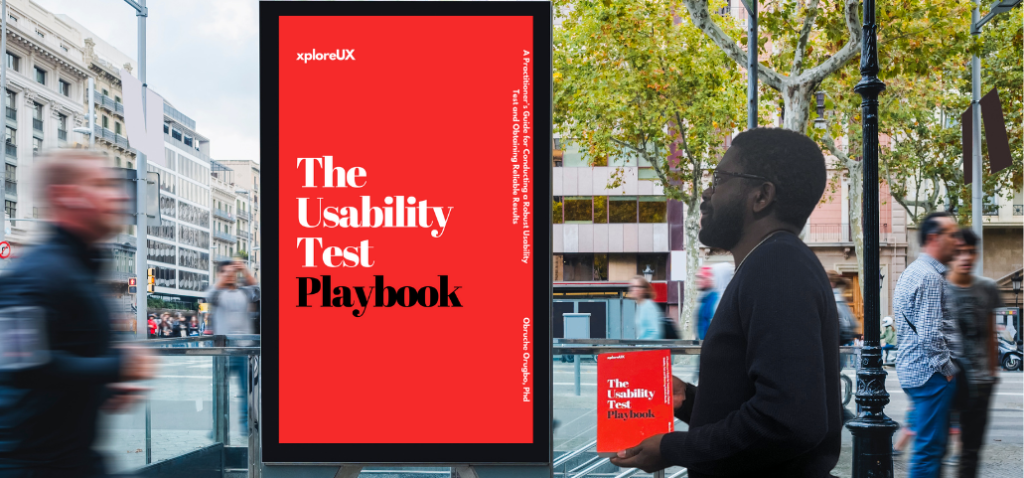
Usability testing is an essential aspect of the UX design process. It entails testing a product or service with real users to uncover usability flaws and gather feedback on the user experience. Designers may discover and fix any issues before releasing a product, acquire useful insights to guide design decisions, and ultimately improve the overall user experience of a product or service by doing usability testing.
In this blog, I will dive deeper into the definition of usability testing, the different forms of usability testing, and the significance of usability testing in UX design.
I’ll also go through the steps for conducting usability testing, including how to create a usability testing plan, find participants, and measure usability metrics. Finally, I will discuss usability testing recommended practices to guarantee that your testing is effective and helpful.
You will have a solid understanding of the function of usability testing in UX design and how to properly include it in your design process by the end of this blog.

Usability testing is an essential step in the UX design process. It entails testing a product or service on actual customers to determine any usability issues and to gather feedback on the customer experience. Usability testing allows designers to find and address any problems before a product is released, gather important information to guide design choices, and ultimately enhance the user experience of a good or service.
What exactly is usability testing then? Usability testing, at its core, is a technique for assessing a product or service by testing it with a representative user group to see how well they can use it. It entails observing how users interact with the product or service, gathering information on their performance and behaviour, and getting user feedback on their overall experience. Usability testing aims to find any problems that might prevent users from achieving their objectives and to gather the information that can inform design decisions.
There are several types of usability testing, each with its benefits and drawbacks. Here are some common types of usability testing:
Lab testing: Lab testing involves conducting usability tests in a controlled environment, such as a laboratory or usability testing facility. Lab testing allows designers to carefully control the testing conditions and to gather more accurate data. However, it can be expensive and time-consuming, and it may not accurately reflect real-world usage.
Field testing: Field testing involves conducting usability tests in the users’ natural environment, such as their home or office. Field testing allows designers to observe how users interact with the product or service in their natural surroundings, which can provide valuable insights. However, field testing can be less controlled and may produce less reliable data.
Remote testing: Remote testing involves conducting usability tests over the internet, using tools such as video conferencing or screen-sharing software. Remote testing allows designers to test with users from a wider geographic area and to gather data more quickly and cost-effectively. However, remote testing may not provide as much context or insight into the user’s environment as lab or field testing.
Moderated testing: Moderated testing involves conducting usability tests with a facilitator present to guide the user through the testing process and ask questions and observe the user’s behaviour. Moderated testing can provide valuable insights and context, but it may also introduce bias or affect the user’s behaviour.
Unmoderated testing: Unmoderated testing involves conducting usability tests without a facilitator present. Users are given tasks to complete and are asked to provide feedback on their experience. Unmoderated testing is typically faster and more cost-effective than moderated testing, but it may not provide as much context or opportunity for follow-up questions.
To make sure that usability testing is efficient and worthwhile, it is crucial to carefully plan and carry out the testing process. This might entail selecting participants who are representative of the target audience, developing tasks and scenarios for them to complete, and calculating pertinent usability metrics. Usability testing can help designers gather important information and insights to guide their design choices and enhance the user experience of their product or service.
Usability testing is an important part of the UX design process for several reasons. Here are three key reasons why usability testing is important in UX design:
Identifying usability issues and fixing them before launch: One of the primary benefits of usability testing is the ability to identify and fix usability issues before a product or service is launched. By testing with real users, designers can identify any areas of the product or service that are confusing, frustrating, or otherwise problematic for users. This allows designers to fix these issues before the product is launched, improving the user experience and reducing the risk of negative reviews or customer dissatisfaction.
Usability testing also has the advantage of allowing you to collect insightful user feedback that can be used to guide design decisions. Designers can gain a better understanding of what works and what doesn’t by observing how users interact with the product or service and soliciting their feedback. This can help designers make better design choices and create a product or service that caters to the wants and needs of their intended users.
Improving the overall user experience of a product or service: Ultimately, the goal of usability testing is to improve the overall user experience of a product or service. By identifying and fixing usability issues and gathering user feedback, designers can create a product or service that is easy to use, intuitive, and enjoyable for users. This can lead to increased user satisfaction, loyalty, and retention, as well as improved business outcomes.

So, how do you conduct usability testing? Here are some key steps to consider when setting up and conducting usability testing:
Setting up a usability testing plan: The first step in conducting usability testing is to set up a testing plan. This should include a clear set of goals and objectives for the testing, as well as a list of tasks and scenarios for users to complete. It is also important to decide on the type of usability testing that you will use, such as lab testing, field testing, remote testing, moderated testing, or unmoderated testing. Your testing plan should also include details on how you will recruit participants, how you will measure usability metrics, and how you will analyse and report on the results of the testing. Learn more from this article, The Benefits of Hiring a UX Consultant.
Recruiting participants for usability testing: Once you have a testing plan in place, the next step is to recruit participants for the testing. It is important to select representative users who match the target audience for your product or service. This may include recruiting users from different demographics, such as age, gender, and location, to ensure that you are testing with a diverse group of users. There are several methods for recruiting participants for usability testing, including recruiting through social media, online forums, or specialized usability testing platforms.
Conducting usability testing: Once you have recruited your participants, it’s time to conduct the usability testing. This may involve setting up a testing location (if you are using lab or field testing), or using video conferencing or screen-sharing software (if you are using remote testing). During the testing, you will observe the participants as they complete the tasks and scenarios that you have set up, and you will collect data on their behaviour and performance. This may include measures such as task completion rate, time on task, and user satisfaction. You may also ask the participants for feedback on their experience, to gather insights and ideas for improvement.
It is important to decide whether to conduct moderated or unmoderated testing based on the goals of your testing and the resources available. Moderated testing involves a facilitator guiding the user through the testing process and asking questions, while unmoderated testing involves giving the user tasks to complete on their own and asking for feedback afterwards. Moderated testing can provide more context and opportunity for follow-up questions, but it may also introduce bias or affect the user’s behaviour. Unmoderated testing is typically faster and more cost-effective, but it may not provide as much context or opportunity for follow-up questions.
Whether you decide on moderated or unmoderated testing, it’s critical to track relevant usability metrics to learn more about user behaviour and performance. Task completion rate, time on task, error rate, and user satisfaction are some common usability metrics. By tracking these metrics, you can learn more about how users interact with your product or service and spot any potential possibilities for improvement.
Result interpretation and writing a usability test report: Once the usability testing is complete, it’s important to interpret the results and write a usability test report. The report should summarize the key findings of the testing, including any usability issues that were identified and any recommendations for improving the user experience. It’s important to present the results clearly and concisely, highlighting the key takeaways and providing actionable recommendations for the design team.
That is to say, conducting usability testing involves setting up a testing plan, recruiting representative participants, and conducting the testing itself, either in a controlled environment (such as a lab or usability testing facility) or remotely (using video conferencing or screen sharing software). By carefully planning and executing usability testing, you can gather valuable insights and data to inform your design decisions and improve the overall user experience of your product or service.

Usability testing is an important part of the UX design process, but it’s important to follow best practices to ensure that the testing is effective and valuable. Here are three key best practices for usability testing:
Ensuring diversity in participant demographics: It’s important to ensure that the participants in usability testing are representative of the target audience for the product or service being tested. This may involve recruiting participants from a variety of demographics, such as different age groups, genders, and cultural backgrounds. Ensuring diversity in participant demographics helps to ensure that the testing is representative of the target audience and helps to identify any usability issues that may affect a wide range of users.
Testing with a small number of participants: It’s generally more effective to test with a small number of participants (5-10) rather than a large number. Testing with a small number of participants allows designers to observe and gather detailed data on the participants’ behaviour and performance. It also allows designers to identify and fix usability issues more quickly and efficiently.
Testing early and often in the design process: It’s important to test early and often in the design process to ensure that usability issues are identified and addressed as early as possible. This may involve testing prototypes, mock-ups, or early versions of the product or service. By testing early and often, designers can identify and fix usability issues more quickly and efficiently, resulting in a better user experience.
In a nutshell, following best practices for usability testing is crucial to ensure that the testing is effective and valuable. By ensuring diversity in participant demographics, testing with a small number of participants, and testing early and often in the design process, designers can gather valuable insights and data to inform their design decisions and improve the overall user experience of their product or service.
In conclusion, usability testing is an important part of the UX design process. It allows designers to identify and fix usability issues, gather valuable feedback from real users, and improve the overall user experience of a product or service. By following best practices for usability testing, designers can ensure that their testing is effective and valuable.
Some best practices for usability testing include:
Ensuring diversity in participant demographics: It’s important to test with a diverse group of users to ensure that the testing is representative of the target audience. This may involve recruiting participants from different age groups, genders, geographic locations, or other characteristics.
Testing with a small number of participants: It’s generally more effective to test with a small number of highly representative participants rather than a large number of less representative participants. This allows designers to gather more focused and valuable data.
Testing early and often in the design process: It’s important to test early and often in the design process to identify and fix usability issues as early as possible. This can save time and resources in the long run and help ensure that the final product or service is as user-friendly as possible.
By following these best practices and considering usability testing in their design process, designers can create products and services that are easy to use and enjoyable for their users.
I hope that this blog has provided you with a thorough understanding of the importance of usability testing in UX design and how to effectively incorporate it into your design process. If you have any questions or would like to learn more about usability testing, please don’t hesitate to reach out!




